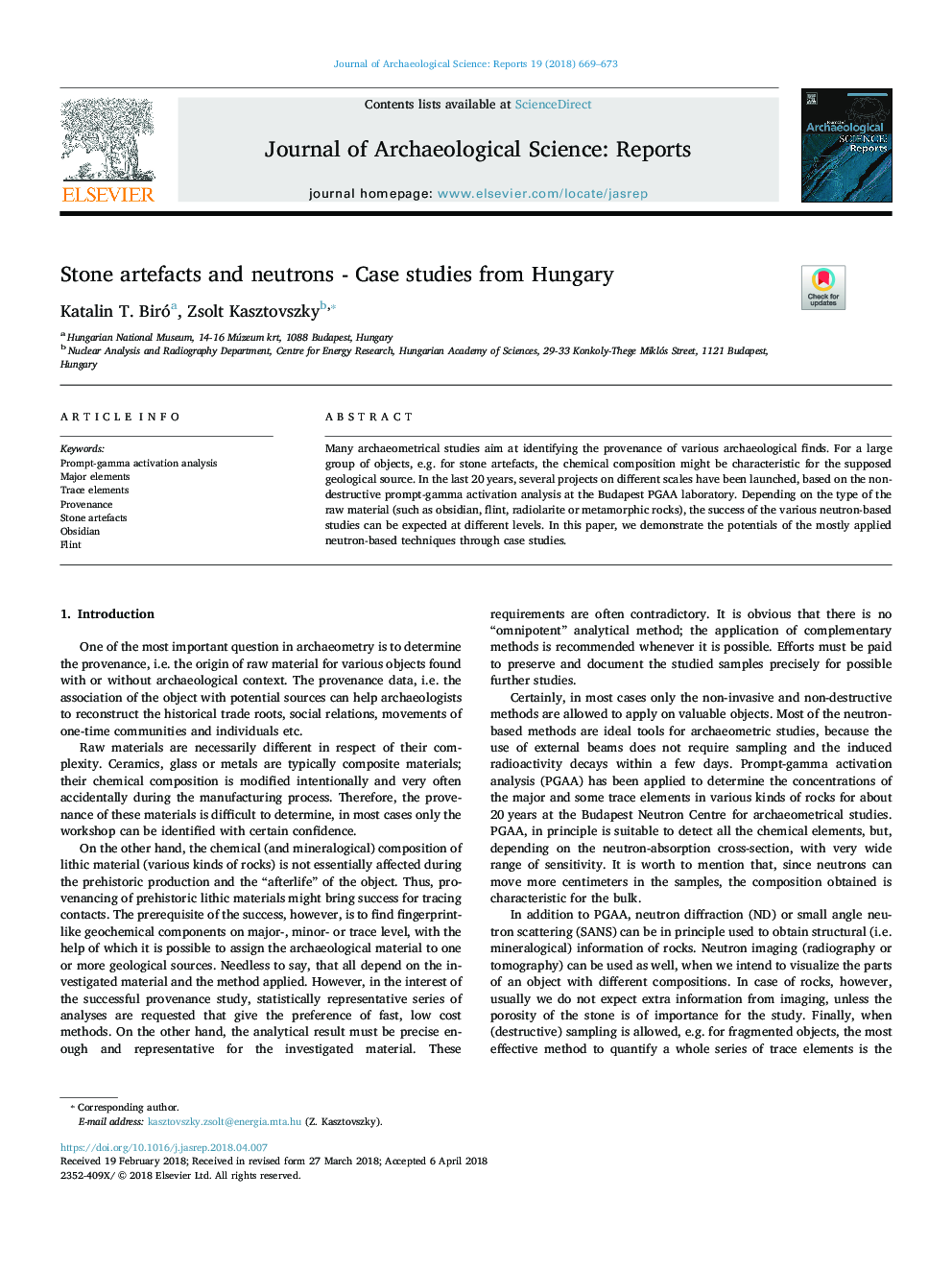| Article ID | Journal | Published Year | Pages | File Type |
|---|---|---|---|---|
| 7444247 | Journal of Archaeological Science: Reports | 2018 | 5 Pages |
Abstract
Many archaeometrical studies aim at identifying the provenance of various archaeological finds. For a large group of objects, e.g. for stone artefacts, the chemical composition might be characteristic for the supposed geological source. In the last 20â¯years, several projects on different scales have been launched, based on the non-destructive prompt-gamma activation analysis at the Budapest PGAA laboratory. Depending on the type of the raw material (such as obsidian, flint, radiolarite or metamorphic rocks), the success of the various neutron-based studies can be expected at different levels. In this paper, we demonstrate the potentials of the mostly applied neutron-based techniques through case studies.
Keywords
Related Topics
Social Sciences and Humanities
Arts and Humanities
History
Authors
Katalin T. Biró, Zsolt Kasztovszky,
